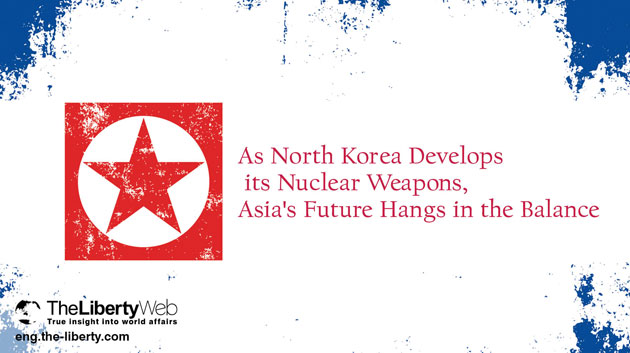As North Korea Develops its Nuclear Weapons, Asia’s Future Hangs in the Balance
Major media outlets have reported that North Korea recently celebrated its 70th anniversary of the North Korean Worker’s Party with a military parade.
In a speech, Kim Jong-un announced “our army is prepared fight the war that America’s imperialists have been awaiting.”
The Endless Korean War
The two Koreas are still technically at war, as the 1950-53 Korean War ended in an armistice instead of a formal peace treaty.
Since then, the Kim dynasty has ruled the North through fear and a state apparatus that is willing and capable to purge individuals deemed as a threat to their system. The democratic South chose to flourish under a capitalist system and became one of the success stories of East Asia.
Now, 70 years since the armistice, the national power between the Koreas has become glaringly apparent. If conflict were to flare up again in the peninsula, the U.S.-backed South Korea would certainly prevail.
Nuclear Development Continues
In order to bridge this gap in national power, North Korea has been working to develop nuclear weaponry. It has been said that North Korea currently possesses several dozen nuclear weapons. The military parade showed a first glimpse of the KN-08 intercontinental ballistic missile with a range of 12000 km, capable of hitting the United States. The issue now is whether or not North Korea has the technology to miniaturize these nuclear weapons so they can be mounted on a missile.
If war starts again against a nuclear-armed North Korea, the United States and South Korea will be faced with a conundrum. A cornered North Korea may have very little incentive to refrain from using the nuclear weapons they possess.
There were attempts to talk North Korea into renouncing their nuclear weapons. Liu Yunshan, China’s fifth-ranked official, was present at the military parade. His objecive was to deepen the relationship between China and North Korea, and to propose resuming the Six-Party Talks regarding North Korea’s nuclear weapons.
The Six-Party Talks that were conducted over 6 years from 2003, however, failed to yield any results. It is evident now, that the Six-Party Talks itself was nothing more than a North Korea’s attempt at buying time while they continued developing nuclear weapons.
In his book “Courage in Politics”, founder of Happy Science Ryuho Okawa mentioned that the Six-Party Talks were pointless, and that in fact China is trying to use a ‘unified Korea’ as a buffer against America and Japan.
At this point, it is unthinkable that North Korea would voluntarily discard their nuclear weapons. The remaining options maybe to take military action against North Korea to rid their weapons at great cost, or to develop defensive weapons to counter the North’s nuclear weapons while waiting for the regime to collapse.
Japan is faced with the need to develop its capabilities to not only maintain peace throughout East Asia, but also to peacefully dissolve the North Korean regime. There is a dire need to develop her space and defense industries, establish alliances with friendly nations, and have the legal framework in place to allow the self-defense force to act in times of emergency.



















